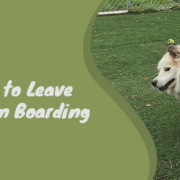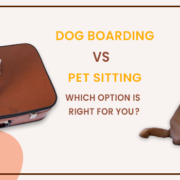Tips for Preparing to Leave Your Pet in Boarding
Leaving your pet at a boarding facility can be a choice to make but with careful planning you can guarantee a seamless and cozy stay, for them. Below are some pointers to help you get everything organized before your departure;
Book Early:
One of the most crucial steps in preparing your pet for boarding is to make your reservation well in advance. This is especially important during peak seasons or holidays when boarding facilities tend to fill up quickly. By booking early, you not only secure a spot in a reputable facility but also give yourself ample time to plan for any special requirements your pet may have.
Visit the Facility in Advance:
Arrange a visit to the boarding facility before the actual stay. This gives you a chance to meet the staff, assess the cleanliness and safety of the environment, and get a sense of the overall atmosphere. A well-maintained and welcoming facility is a good indication of the quality of care your pet will receive.
Update Vaccinations and Medications:
Ensuring your pet is up-to-date on all vaccinations is a crucial step before boarding. Provide the boarding facility with necessary documentation, and make sure your pet’s vaccinations are current. Additionally, if your pet requires any medication, be sure to pack enough for the entire duration of their stay, along with clear instructions for administration.
Provide Familiar Items:
Bringing along some of your pet’s favorite toys, blanket, or bed can provide comfort in a new environment. Familiar scents can help ease any anxiety your pet may experience, making the boarding experience feel more like home.
Pack Adequate Supplies:
Pack enough food for your pet’s entire stay, plus a little extra in case of unexpected delays. Don’t forget to include feeding instructions. If your pet has any specific dietary needs, communicate them clearly to the boarding staff. Consistency in their diet can help prevent digestive issues.
Emergency Contacts:
Share multiple contact numbers where you can be reached in case of an emergency. Additionally, provide the name and contact information of your pet’s veterinarian. This ensures that the boarding facility can quickly reach you if there are any concerns about your pet’s health.
Provide Detailed Care Instructions:
Write down any specific care instructions for your pet. This could include feeding schedules, exercise needs, and any quirks or preferences they have. Clear communication ensures that the staff can provide personalized care for your pet.
Discuss Health Concerns:
Inform the boarding staff of any pre-existing health conditions your pet may have. This ensures they can monitor your pet appropriately and respond effectively in case of any health issues. Transparency about your pet’s health allows for the best possible care.
Maintain a Calm Departure:
Pets are intuitive and can pick up on their owner’s emotions. As difficult as it may be, try to stay calm and composed during the departure. Avoid long and emotional goodbyes, as this can sometimes make the adjustment period harder for your pet. Trust that your pet is in capable hands and that they will be well taken care of.
Stay in Touch:
While it’s natural to miss your furry friend, try to resist the urge to constantly check in. This can sometimes make the adjustment period harder for your pet. Trust the professionals at the boarding facility to provide excellent care, and remember that they are experienced in handling pets’ needs.
Conclusion:
By implementing these suggestions you can ensure that your furry friend has a pleasant and contented time during your absence. It’s important to be well prepared, as an owner to guarantee a boarding experience, for your beloved companion. Have a journey!



